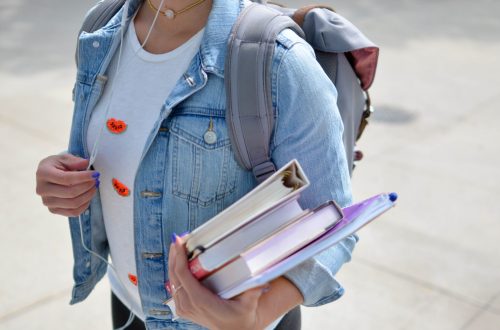
Don’t Chase Curriculum: Focus on Student Needs
By Amanda Trimillos
Even before the school year opened its doors to students this year, conversations have taken place on many levels on ways to best meet student needs. Teachers are discussing how to catch up students who missed material in pandemic learning environments; parents are talking about how to tackle struggles their children faced in schools; and students are wondering if they really are prepared for a new school year.
Consensus is that this is not the year to chase curriculum. To chase the missed curriculum is to ignore the idea that many students are not yet ready for the quick transition back to a fast-paced learning environment. When we meet students’ social and emotional needs first, curriculum mastery will follow.
Recognize and Understand Student Concerns
To meet a student’s needs, we must first recognize those needs and put them in context. The Military Child Education Coalition (MCEC) 2020 survey exposed the following student concerns, which have a direct impact on a student’s ability to focus on learning targets:
- Making friends
- Feeling accepted and fitting in
- Building self-confidence
- Dealing with parental deployments
- Managing stress
In 2021, these concerns still hold true. But, military-connected students also find themselves facing these added pandemic-centered concerns that continue to impact their ability to focus on curriculum:
- Returning to campus for the first time (for many it is their first time on campus even though they moved to the area last year)
- Another cycle of pandemic PCS equals two years of new students on campus
- Learning gaps cause by differing learning environments
- Learning gaps caused multi-state PCS and new state standards
Looking at typical PCS concerns in combination with added pandemic-created concerns, it is more important than ever for parents and educators to communicate and partner together to meet the social and emotional needs of students, so that we can start to also meet their academic needs.
Support Students With a Variety of Strategies
Start with a Parent-Teacher Conference
Spend time this year building relationships between teachers and parents to build a student-advocacy team. Remember to invite any other adult on campus who can support the student (counselors and coaches are great advocates!). Talk about how the pandemic impacted the student both socially and emotionally as well as academically. Did the student thrive in the new learning environments? Or did the pandemic learning protocols create challenges to learning? What about friendship building? Does the student have a friend group on campus this year?
Focus on classroom teambuilding activities and get-to-know-you activities
This strategy is important for all students, but especially for military-connected students who PCS’s during the pandemic. These students need added supports to feel welcome and supported in their classroom. The best way to build this support system is to plan dedicated time for teambuilding activities. Once students feel supported, they will be ready to learn.
Purposefully assign group and partner assignments
Teachers can purposefully plan assignments early in the year that depend on low-threat group or partner assignments. As students are rebuilding friendships in the classroom it is important to do a mix between student choice groups and teacher directed groups. Teachers can help build lasting friendships simply through grouping strategies.
Talk about opportunities to get involved in clubs or sports
Many schools shifted club and sports opportunities last year; many schools are still deciding how clubs and sports will look this year. Student advocates can discuss together which type of extracurricular activities would be a good fit for a student. Then different adults on the student-advocacy team should offer a personal invitation for the student to join. Maybe it is a new club; maybe it’s a longstanding club. The goal is to help ensure the student builds a connection on campus.
Invite students to volunteer for service opportunities
This idea is very close to the extra-curricular strategy, but some students are not ready to join a larger club or may not have interest. These students might find a better connection on campus with a mentor teacher who can open the doors to service opportunities. They can be simple yet meaningful tasks on campus that will help the student create a strong connection. Who on your campus raises and lowers the school flag? Who helps hang school posters? Who helps re-shelve library books? Perhaps these are ways to encourage students to become more involved on campus.
When the student-advocacy team collaborates about meeting the concerns of the student, they can add the conversation about academic needs. The student’s willingness to learn and take academic risks in the classroom will blossom. The key is to continue to be flexible to meet the student’s needs. Academic supports may include on-campus tutoring, library tutoring, peer tutoring, or online tutoring. Tutor.com/military is still free for military-connected families, and they are available 24 hours a day.
The goal in taking this approach is to ensure that student advocates, parents, educators, counselors, and coaches focus on supporting the whole student. When we work together to recognize each student’s social and emotional needs, in addition to their academic needs, we support all students on campus.
Amanda Trimillos, EdD, is a military spouse, mother, and National Board-Certified teacher with extensive experience teaching military students in the United States and overseas. She is coauthor of Seasons of My Military Student: Practical Ideas for Parents and Teachers and wrote the essay “School Choices and Changes” in Stories Around the Table: Laugher, Wisdom, and Strength in Military Life.
More about supporting students in pandemic circumstances and transitions:




